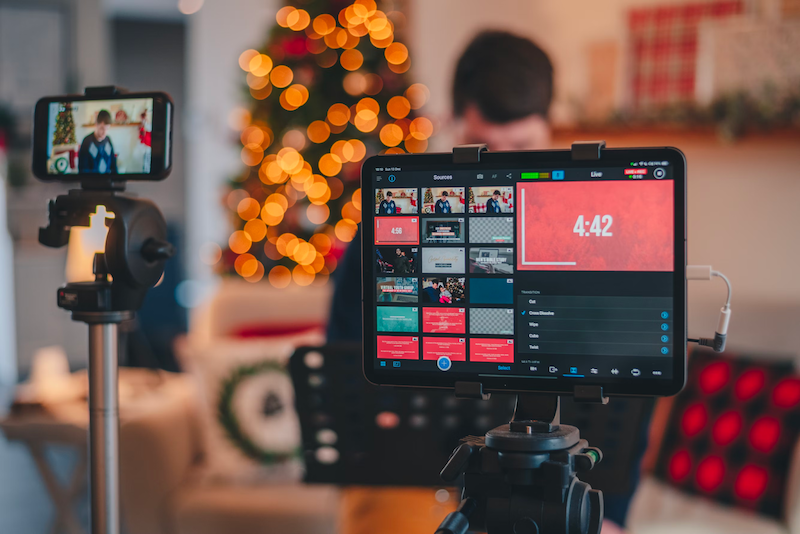
The COVID-19 pandemic dramatically reshaped the way we consume media and entertainment. With the world gradually transitioning into a post-pandemic era, it's fascinating to examine the shifts in our media consumption habits. In this blog post, we'll explore the post-pandemic entertainment trends and how they're influencing the way we consume media in 2023. If you’re a business owner, this’ll help you gain a better understanding of the current shifts in the media landscape, allowing you to make more informed business decisions!

The post-pandemic entertainment landscape has undergone significant changes. As people adapted to lockdowns and restrictions, they turned to digital platforms for their entertainment needs.
Hybrid media consumption refers to the blending of traditional and digital channels. It's a key trend for 2023, as we seamlessly transition between platforms and devices to access our favourite content. Digital media consumption is on the rise, whether it's news, entertainment, or educational content, the internet is the go-to source. The shift to digital media consumption is irreversible. The pandemic taught us to value the convenience and accessibility of digital platforms. Even as restrictions ease, these habits persist. This results in a rise in popularity with the following mentioned trends.

Streaming services and online content consumption soared. Streaming services like Netflix, Amazon Prime, and Disney+ remain popular, but traditional TV and cable networks aren't obsolete.
Streaming services have become an integral part of our media consumption. They are introducing features like personalised algorithms, interactive content, and a diverse range of original shows to keep viewers engaged. Despite the paywalls these services often have, consumers are more willing than ever to subscribe. Subscription-based media is a dominant model for content distribution. People have specific content streaming preferences, some prefer binge-watching TV series, while others like short, snackable content, thus, streaming services allow for that flexibility with choosing when, where and what to watch. Plus, today’s streaming platforms often employ AI algorithms to analyse user preferences and serve content that matches individual tastes, further enhancing the streaming experience.
Cable networks on the other hand, have adapted by also offering streaming options, catering to the changing habits of consumers. Over-the-top (OTT) platforms, known for delivering content over the internet, have gained immense popularity. They offer a variety of content genres and cater to niche audiences. The entertainment industry itself has had to evolve to meet the demands of the post-pandemic audience. Production companies are investing in original series and movies to attract and retain viewers. The emphasis on producing high-quality content has never been greater.

Social media is no longer just for connecting with friends and family. It has become a hub for entertainment and information. Platforms like Instagram, Twitter, and Facebook now play a crucial role in shaping public opinion and influencing entertainment choices. Online content consumption, especially on platforms like YouTube and TikTok, is at an all-time high.
With that, content creators and influencers play a significant role in shaping the content landscape. Influencers have become a force in the entertainment industry, influencing consumer choices and impacting the success of movies, TV shows, and products.
What’s also interesting to note however, is that most users nowadays are not only consumers but active participants in content creation. This gives way to a new trend, user-generated content (UGC). UGC mainly thrives on platforms like TikTok and Snapchat, as everyday users become content creators and influencers in their own right.

Virtual events and experiences have gained traction as a result of the pandemic. From virtual concerts to digital art exhibitions, these events offer unique and engaging experiences. You’ll notice more meetings being held online, through popular video call apps like Zoom or Google Meet. This helps various companies save costs on physical event spaces, whilst also being able to garner more global attendees.

People are obtaining and discovering content differently since the pandemic. Mobile entertainment apps are a major part of our media consumption, as people are constantly on the go. Mobile optimisation becomes inevitable, as more users are accessing content through their phones. You’ll want to make sure that your website or products are best suited for mobile phone screens otherwise, you might risk a huge loss in traffic.

In the age of evolving social media, AI, AR and VR tech, there’s almost no excuse to not consider interactivity in your products. Product or content interactivity basically refers to the ability to engage and interact with users. Interactive content also brings attention to the rise of interactive storytelling, where content allows viewers to make choices and influence the narrative. This is gaining popularity and providing audiences with a more engaging experience, as we can see with Netflix’s Bandersnatch for example.
---
In conclusion, the post-pandemic entertainment landscape in 2023 is marked by a blend of traditional and digital media consumption. Streaming services, digital media, and user-generated content are at the forefront, and content delivery has become more personalised and interactive. Consumers are discovering content in different ways. As we continue to adapt to the evolving entertainment trends, it's essential for content creators and providers to stay attuned to the changing preferences of their audiences. Feel free to reach out to our team over at INTERLUNAR if you have any inquiries on how your business can stay up to date with changing consumer trends!